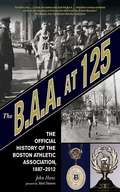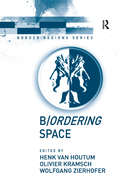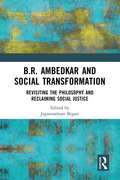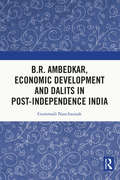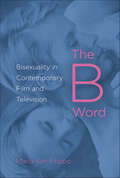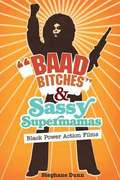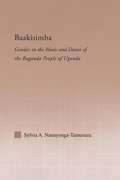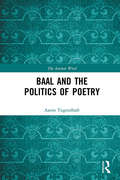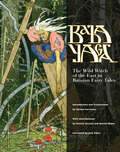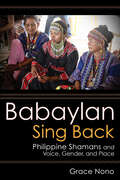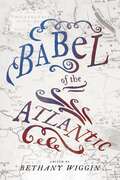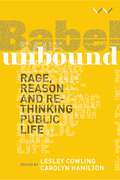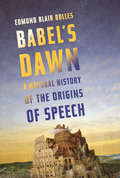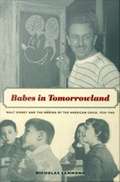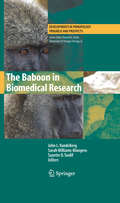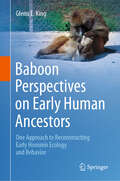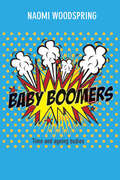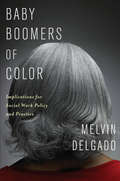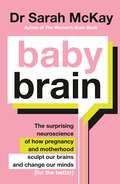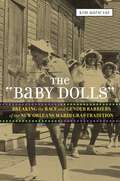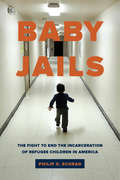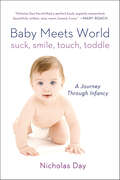- Table View
- List View
The B.A.A. at 125: The Official History of the Boston Athletic Association, 1887-2012
by John Hanc Matt DamonFounded in 1887 and celebrating its 125th anniversary in 2012, the Boston Athletic Association is one of the oldest sports organizations in America. It's best known today for its signature annual event, the Boston Marathon, which is the third-largest marathon and attracts tens of thousands of participants and worldwide media coverage. But the B.A.A. has also been amazingly prescient in anticipating what would become one of the major social trends of the late twentieth and early twenty-first centuries: the modern fitness movement. Consider some of the B.A.A.'s firsts:Nine out of the fourteen members of the US team participating in the modern Olympic Games in Athens (1896) were B.A.A. athletes.The B.A.A. launched the first US marathon, the Boston Marathon, in 1897.The B.A.A. pioneered and actively promoted many of today's popular sports, including football and water polo.The original B.A.A. club house, in the historic Back Bay section of Boston, is the precursor of today's health club.Still, the B.A.A. story is not simply one of athletic achievements and firsts. It's also the dramatic story of people and the times in which they lived--a social history that unfolds in nineteenth-century Boston but takes readers around the world, up to the present, and includes a large and international cast of characters. A wonderfully illustrated history,The B.A.A. at 125 highlights the Boston Athletic Association's important role in American sports history.
B/ordering Space (Border Regions Series)
by Henk van HoutumIn the wake of globalization, numerous social scientists are turning to concepts of mobility, fluidity and hybridity to characterize a presumed de-territorialization and de-bordering of contemporary social and economic relations. This book brings together a select group of internationally renowned human geographers to explore the use of these concepts in relation to space, place and territory. In doing so, they (re)situate the subject of borders as active socio-spatial processes from a variety of theoretical perspectives. The contributors link debates on borders to discussions within the wider sphere of cultural studies, notably those addressing themes of migration, post-colonialism, the formation of national/regional identities and radical democratic practice. The chapters focus on those discursive practices that constitute 'bordered' geographical entities in the first instance through differentiated regimes of discourse. The book thus transcends the narrower field of borderlands research by building bridges to other domains of enquiry within political and human geography.
B.R. Ambedkar and Social Transformation: Revisiting the Philosophy and Reclaiming Social Justice
by Jagannatham BegariThis book revisits the philosophy of B.R Ambedkar in the context of the present socio-economic-political realities of India. It examines the philosophical and theoretical interventions of Ambedkar, as well as his egalitarian principles of equality, liberty, fraternity and morality. Noting the current shift in state policy from welfarism to neoliberalism, the book argues that the measures, interventions and recommendations that Ambedkar made are highly appropriate and concrete to face challenges and can be considered as practical solutions to existing problems. It studies various themes that form a part of his oeuvre such as Buddhism, federalism, justice, social exclusion, representation, anti-caste system, women’s equality, among others. It also discusses his impact on literature, visual arts, and literary, democratic and cultural movements throughout history. The volume positions Ambedkar as a theoretician, social reformer, and a real visionary of social justice and democratization. It will be of great interest to scholars and researchers of social exclusion, politics, especially Indian political thought, sociology and South Asian studies.
B.R. Ambedkar, Economic Development and Dalits in Post-Independence India
by Gummadi NancharaiahThis book examines Ambedkar the economist. It foregrounds his economic ideas within the context of post-independence India. It also studies the socio-economic status of Dalits in the country focusing on Ambedkar’s views on inclusive and equitable growth. The volume: · Focuses on the economic writings of Ambedkar and looks at his views on caste and its economic implications, monetary and fiscal systems, as well as exchange rate and trade; · Discusses issues like land reforms and agrarian change, poverty, higher education and human rights from a Dalit perspective; · Examines the relevance of Ambedkar’s economic ideas for contemporary India. Drawing on interdisciplinary research methods, this book will be of great interest to scholars and researchers of economics, political science, development studies, history, human rights, and South Asian studies.
The B Word: Bisexuality in Contemporary Film and Television
by Maria San FilippoOften disguised in public discourse by terms like "gay," "homoerotic," "homosocial," or "queer," bisexuality is strangely absent from queer studies and virtually untreated in film and media criticism. Maria San Filippo aims to explore the central role bisexuality plays in contemporary screen culture, establishing its importance in representation, marketing, and spectatorship. By examining a variety of media genres including art cinema, sexploitation cinema and vampire films, "bromances," and series television, San Filippo discovers "missed moments" where bisexual readings of these texts reveal a more malleable notion of subjectivity and eroticism. San Filippo's work moves beyond the subject of heteronormativity and responds to "compulsory monosexuality," where it's not necessarily a couple's gender that is at issue, but rather that an individual chooses one or the other. The B Word transcends dominant relational formation (gay, straight, or otherwise) and brings a discursive voice to the field of queer and film studies.
"Baad Bitches" and Sassy Supermamas: Black Power Action Films
by Stephane DunnThis lively study unpacks the intersecting racial, sexual, and gender politics underlying the representations of racialized bodies, masculinities, and femininities in early 1970s black action films, with particular focus on the representation of black femininity. Stephane Dunn explores the typical, sexualized, subordinate positioning of women in low-budget blaxploitation action narratives as well as more seriously radical films like Sweet Sweetback's Baadasssss Song and The Spook Who Sat by the Door, in which black women are typically portrayed as trifling "bitches" compared to the supermacho black male heroes. The terms "baad bitches" and "sassy supermamas" signal the reversal of this positioning with the emergence of supermama heroines in the few black action films in the early 1970s that featured self-assured, empowered, and tough (or "baad") black women as protagonists: Cleopatra Jones, Coffy, and Foxy Brown. Dunn offers close examination of a distinct moment in the history of African American representation in popular cinema, tracing its emergence out of a radical political era, influenced especially by the Black Power movement and feminism. "Baad Bitches" and Sassy Supermamas also engages blaxploitation's impact and lingering aura in contemporary hip-hop culture as suggested by its disturbing gender politics and the "baad bitch daughters" of Foxy Brown and Cleopatra Jones, rappers Lil' Kim and Foxy Brown.
Baakisimba: Gender in the Music and Dance of the Baganda People of Uganda (Current Research in Ethnomusicology: Outstanding Dissertations)
by Sylvia Antonia Nannyonga-TamusuzaFirst Published in 2005. Routledge is an imprint of Taylor & Francis, an informa company.
Baal and the Politics of Poetry (The Ancient Word)
by Aaron TugendhaftBaal and the Politics of Poetry provides a thoroughly new interpretation of the Ugaritic Baal Cycle that simultaneously inaugurates an innovative approach to studying ancient Near Eastern literature within the political context of its production. The book argues that the poem, written in the last decades of the Bronze Age, takes aim at the reigning political-theological norms of its day and uses the depiction of a divine world to educate its audience about the nature of human politics. By attuning ourselves to the specific historical context of this one poem, we can develop more nuanced appreciation of how poetry, politics, and religion have interacted—in antiquity, and beyond.
Baba Yaga: The Wild Witch of the East in Russian Fairy Tales
by Sibelan ForresterBaba Yaga is an ambiguous and fascinating figure. She appears in traditional Russian folktales as a monstrous and hungry cannibal, or as a canny inquisitor of the adolescent hero or heroine of the tale. In new translations and with an introduction by Sibelan Forrester, Baba Yaga: The Wild Witch of the East in Russian Fairy Tales is a selection of tales that draws from the famous collection of Aleksandr Afanas'ev, but also includes some tales from the lesser-known nineteenth-century collection of Ivan Khudiakov. This new collection includes beloved classics such as "Vasilisa the Beautiful" and "The Frog Princess," as well as a version of the tale that is the basis for the ballet "The Firebird."The preface and introduction place these tales in their traditional context with reference to Baba Yaga's continuing presence in today's culture--the witch appears iconically on tennis shoes, tee shirts, even tattoos. The stories are enriched with many wonderful illustrations of Baba Yaga, some old (traditional "lubok" woodcuts), some classical (the marvelous images from Victor Vasnetsov or Ivan Bilibin), and some quite recent or solicited specifically for this collection
Babaylan Sing Back: Philippine Shamans and Voice, Gender, and Place
by Grace NonoBabaylan Sing Back depicts the embodied voices of Native Philippine ritual specialists popularly known as babaylan. These ritual specialists are widely believed to have perished during colonial times, or to survive on the margins in the present-day. They are either persecuted as witches and purveyors of superstition, or valorized as symbols of gender equality and anticolonial resistance. Drawing on fieldwork in the Philippines and in the Philippine diaspora, Grace Nono's deep engagement with the song and speech of a number of living ritual specialists demonstrates Native historical agency in the 500th year anniversary of the contact between the people of the Philippine Islands and the European colonizers.
Babel of the Atlantic (Max Kade Research Institute: Germans Beyond Europe)
by Bethany WigginDespite shifting trends in the study of Oceanic Atlantic history, the colonial Atlantic world as it is described by historians today continues to be a largely English-only space; even when other language communities are examined, they, too, are considered to be monolingual and discrete. Babel of the Atlantic pushes back against this monolingual fallacy by documenting multilingualism, translation, and fluid movement across linguistic borders. Focusing on Philadelphia and surrounding areas that include Germantown, Bethlehem, and the so-called Indian country to the west, this volume demonstrates the importance of viewing inhabitants not as members of isolated language communities, whether English, German, Lenape, Mohican, or others, but as creators of a vibrant zone of mixed languages and shifting politics. Organized around four themes—religion, education, race and abolitionism, and material culture and architecture—and drawing from archives such as almanacs, newspapers, and the material world, the chapters in this volume show how polyglot, tolerant, and multilingual spaces encouraged diverse peoples to coexist. Contributors examine subjects such as the multicultural Moravian communities in colonial Pennsylvania, the Charity School movement of the 1750s, and the activities of Quaker abolitionists, showing how educational and religious movements addressed and embraced cultural and linguistic variety.Drawing Early American scholarship beyond the normative narrative of monolingualism, this volume will be invaluable to historians and sociolinguists whose work focuses on Pennsylvania and colonial, revolutionary, and antebellum America.In addition to the editor, the contributors include Craig Atwood, Patrick M. Erben, Cynthia G. Falk, Katherine Faull, Wolfgang Flügel, Katharine Gerbner, Maruice Jackson, Lisa Minardi, Jürgen Overhoff, and Birte Pfleger.
Babel of the Atlantic (Max Kade Research Institute)
by Bethany WigginDespite shifting trends in the study of Oceanic Atlantic history, the colonial Atlantic world as it is described by historians today continues to be a largely English-only space; even when other language communities are examined, they, too, are considered to be monolingual and discrete. Babel of the Atlantic pushes back against this monolingual fallacy by documenting multilingualism, translation, and fluid movement across linguistic borders. Focusing on Philadelphia and surrounding areas that include Germantown, Bethlehem, and the so-called Indian country to the west, this volume demonstrates the importance of viewing inhabitants not as members of isolated language communities, whether English, German, Lenape, Mohican, or others, but as creators of a vibrant zone of mixed languages and shifting politics. Organized around four themes—religion, education, race and abolitionism, and material culture and architecture—and drawing from archives such as almanacs, newspapers, and the material world, the chapters in this volume show how polyglot, tolerant, and multilingual spaces encouraged diverse peoples to coexist. Contributors examine subjects such as the multicultural Moravian communities in colonial Pennsylvania, the Charity School movement of the 1750s, and the activities of Quaker abolitionists, showing how educational and religious movements addressed and embraced cultural and linguistic variety.Drawing early American scholarship beyond the normative narrative of monolingualism, this volume will be invaluable to historians and sociolinguists whose work focuses on Pennsylvania and colonial, revolutionary, and antebellum America.In addition to the editor, the contributors include Craig Atwood, Patrick M. Erben, Cynthia G. Falk, Katherine Faull, Wolfgang Flügel, Katharine Gerbner, Maruice Jackson, Lisa Minardi, Jürgen Overhoff, and Birte Pfleger.
Babel Unbound: Rage, reason and rethinking public life
by Lesley Cowling and Carolyn HamiltonIn this timely, original and sophisticated collection, writers from the Global South demonstrate that forms of publicness are multiple, mobile and varied The notion that societies mediate issues through certain kinds of engagement is at the heart of imaginings of democracy and often centers on the ideal of the public sphere. But this imagined foundation of how we live collectively appears to have suffered a dramatic collapse across the world, with many democracies apparently unable to solve problems through talk – or even to agree on who speaks, in what ways and where. In the 10 essays in this timely, original and sophisticated collection, writers from southern Africa combine theoretical analysis with the examination of historical cases and contemporary developments to demonstrate that forms of publicness are multiple, mobile and varied. They propose new concepts and methodologies to analyse how public engagements work in society. Babel Unbound examines charged examples from the Global South, such as the centuries old Timbuktu archive, Nelson Mandela as a powerful absent presence in 1960s public life, and the challenges to the terms of contemporary debate around the student activism of #rhodesmustfall and #feesmustfall. These show how issues of public discussion span both archive and media, verbal debates in formal spaces and visual performances that circulate in unpredictable ways.
Babel's Dawn: A Natural History of the Origins of Speech
by Edmund Blair BollesBabel's Dawn is a saga covering six million years. Like a walk through a natural history museum, Bolles demonstrates how members of the human lineage came to speak. Beginning with a scene of the last common ancestor ignoring a bird as it flies by, he guides us through generations, illuminating how it became possible for two Homo sapiens to not only acknowledge the songbird, but to also discuss the meaning of its song. Tracing the rise of voluntary vocalizations as well as the first word, phrases, and sentences, Bolles works against the common belief that the reason apes cannot speak is they are not smart enough. In this groundbreaking work, Bolles purposes that we now have substantial evidence that this age-old idea can no longer stand. With concrete portrayals of living individuals interwoven with evidence, data, and theory, Babel's Dawn is a powerful account of a great scientific revolution
Babes in Tomorrowland: Walt Disney and the Making of the American Child, 1930-1960
by Nicholas SammondLinking Margaret Mead to the Mickey Mouse Club and behaviorism to Bambi, Nicholas Sammond traces a path back to the early-twentieth-century sources of "the normal American child. " He locates the origins of this hypothetical child in the interplay between developmental science and popular media. In the process, he shows that the relationship between the media and the child has long been much more symbiotic than arguments that the child is irrevocably shaped by the media it consumes would lead one to believe. Focusing on the products of the Walt Disney company, Sammond demonstrates that without a vision of a normal American child and the belief that movies and television either helped or hindered its development, Disney might never have found its market niche as the paragon of family entertainment. At the same time, without media producers such as Disney, representations of the ideal child would not have circulated as freely in American popular culture. In vivid detail, Sammond describes how the latest thinking about human development was translated into the practice of child-rearing and how magazines and parenting manuals characterized the child as the crucible of an ideal American culture. He chronicles how Walt Disney Productions' greatest creation--the image of Walt Disney himself--was made to embody evolving ideas of what was best for the child and for society. Bringing popular child-rearing manuals, periodicals, advertisements, and mainstream sociological texts together with the films, tv programs, ancillary products, and public relations materials of Walt Disney Productions, Babes in Tomorrowland reveals a child that was as much the necessary precursor of popular media as the victim of its excesses.
Babies without Borders
by Karen DubinskyInternational adoptions are both high-profile and controversial, with the celebrity adoptions and critically acclaimed movies such as Casa de los babys of recent years increasing media coverage and influencing public opinion. Neither celebrating nor condemning cross-cultural adoption, Karen Dubinsky considers the political symbolism of children in her examination of adoption and migration controversies in North America, Cuba, and Guatemala.Babies Without Borders tells the interrelated stories of Cuban children caught in Operation Peter Pan, adopted Black and Native American children who became icons in the Sixties, and Guatemalan children whose 'disappearance' today in transnational adoption networks echoes their fate during the country's brutal civil war. Drawing from extensive research as well as from her critical observations as an adoptive parent, Karen Dubinsky aims to move adoption debates beyond the current dichotomy of 'imperialist kidnap' versus 'humanitarian rescue.' Integrating the personal with the scholarly, Babies Without Borders exposes what happens when children bear the weight of adult political conflicts.
The Baboon in Biomedical Research
by Suzette D. Tardif John L. Vandeberg Sarah Williams-BlangeroThe present volume was written to provide an overview of many diverse areas of biomedical research to which the baboon has made and continues to make important contributions. Each chapter reviews the recent literature on the topic, discusses work in progress, and presents the authors' vision of research opportunities and likely future contributions of the baboon model to human medicine. The baboon is a relative newcomer to the repertoire of nonhuman primates used in biomedical research. However, in less than 50 years since its first use in the U.S. it has become one of the most popular laboratory primate species. It is larger than the other widely used monkey species, making it advantageous for many types of experiments and technological developments. It is extraordinarily hardy and highly fecund in captivity. It closely resembles humans in a variety of physiological and disease processes, such as cholesterol metabolism, early stages of atherosclerosis, and alcoholic liver disease. Its chromosomes closely resemble those of humans, and many genes of the two species lie in the same chromosomal order. Among all primates, baboons are the most widely used as models for the genetics of susceptibility to complex diseases and they are the first nonhuman primate for which a framework genetic linkage map was established. In addition, the baboon genome is currently being sequenced, and as a result the utility of this species for biomedical research will be dramatically increased. For all of these reasons, the baboon is certain to continue as one of the premier nonhuman species used in medical research.
Baboon Perspectives on Early Human Ancestors: One Approach to Reconstructing Early Hominin Ecology and Behavior
by Glenn E. KingBaboon Perspectives on Early Human Ancestors brings together the most recent information on the behavior and ecology of Papio baboons and early hominins. Building on a long tradition and integrating recent developments, it discusses the ways that baboon behavior can enhance our understanding of our early ancestors. This approach augments interpretation of the archeological record and provides hypotheses for the gaps in the record and for the millions of years before the record began. Baboon behavior complements the widely used chimpanzee models, but also generates competing hypotheses. Among the many topics covered in the book are foraging and predator defense; multi-level societies and male-female relationships; social and ecological cognition; and communication and the roots of language.
Baby Boomers: Time and Ageing Bodies
by Naomi WoodspringThis ground-breaking study of the baby boomer generation, who are now entering old age, breaks new ground in ageing research. This post-war cohort has experienced a range of social, cultural, and medical changes in regard to their notions of body, from the introduction of the Pill and the decoupling of sex and procreation to the H-Bomb and Earthrise. Yet, paradoxically, ageing is also universal. This exciting book reflects the intersection of time, ageing, body and identity to give a more nuanced and enlightened understanding of the ageing process.
Baby Boomers of Color: Implications for Social Work Policy and Practice
by Melvin DelgadoBecause researchers often treat baby boomers of color as belonging to one group, quality data on the individual status of specific racial populations is lacking, leading to insufficiently designed programs, policies, and services. The absence of data is a testament to the invisibility of baby boomers of color in society and deeply affects the practice of social work and other helping professions that require culturally sensitive approaches. Melvin Delgado rectifies this injustice by providing a comprehensive portrait of the status and unique assets of boomers of color. Using specific data, he grounds an understanding of boomers'financial, medical, and emotional needs within a historical, socioeconomic, cultural, and political context, resulting in tailored recommendations for meeting the challenges of a growing population. His research focuses on African American, Hispanic, Asian/Pacific Islander, and Native American older adults and addresses issues of financial security, employment stability, housing, and health care, which are often complicated by linguistic and cultural differences. Rather than treat baby boomers of color as a financial burden on society and its resources, Delgado recognizes their strengths and positive contributions to families and communities, resulting in an affirming and empowering approach to service.
Baby Boomers of Color: Implications for Social Work Policy and Practice
by Melvin DelgadoMelvin Delgado provides a comprehensive portrait of the status and unique assets of boomers of color
Baby Brain: The surprising neuroscience of how pregnancy and motherhood sculpt our brains and change our minds (for the better)
by Dr Sarah McKayIf you think baby brain is bad for you, think again - because neuroscientist Dr Sarah McKay (author of The Women's Brain Book) has looked at studies and talked to experts from all over the world and the proof is in: giving birth is one of the best things to ever happen to a woman's brain.Moreover, the positive effects of baby brain last well beyond the baby stage - even into old age, with elderly mothers' brains showing resilience to ageing. Plus, the benefits of baby brain show up for non-birth parents - even fatherhood has a profound effect on the hormones and brains of men.This fascinating book weaves together baby brain research and interviews with neuroscientists and women's health specialists - many of whom are mothers - with personal experiences from parents concerning baby brain, nesting, maternal instinct, social support, anxiety and sleep. In each aspect the conclusion is clear: having a baby improves a mother's memory, and makes her smarter and more empathetic, intuitive and socially savvy.Baby Brain contains the ultimate good-news story about mothers' brains, backed up by scientific research from leading experts and presented in highly readable bite-sized sections by one of Australia's leading science communicators.
The 'Baby Dolls': Breaking the Race and Gender Barriers of the New Orleans Mardi Gras Tradition (Eisenhower Center Studies on War and Peace)
by Kim Marie VazOne of the first women's organizations to mask and perform during Mardi Gras, the Million Dollar Baby Dolls redefined the New Orleans carnival tradition. Tracing their origins from Storyville-era brothels and dance halls to their re-emergence in post-Katrina New Orleans, author Kim Marie Vaz uncovers the fascinating history of the "raddy-walking, shake-dancing, cigar-smoking, money-flinging" ladies who strutted their way into a predominantly male establishment.The Baby Dolls formed around 1912 as an organization of African American women who used their profits from working in New Orleans's red-light district to compete with other Black prostitutes on Mardi Gras. Part of this event involved the tradition of masking, in which carnival groups create a collective identity through costuming. Their baby doll costumes -- short satin dresses, stockings with garters, and bonnets -- set against a bold and provocative public behavior not only exploited stereotypes but also empowered and made visible an otherwise marginalized female demographic. Over time, different neighborhoods adopted the Baby Doll tradition, stirring the creative imagination of Black women and men across New Orleans, from the downtown Trem� area to the uptown community of Mahalia Jackson. Vaz follows the Baby Doll phenomenon through one hundred years with photos, articles, and interviews and concludes with the birth of contemporary groups, emphasizing these organizations' crucial contribution to Louisiana's cultural history.
Baby Jails: The Fight to End the Incarceration of Refugee Children in America
by Philip G. Schrag"I worked in a trailer that ICE had set aside for conversations between the women and the attorneys. While we talked, their children, most of whom seemed to be between three and eight years old, played with a few toys on the floor. It was hard for me to get my head around the idea of a jail full of toddlers, but there they were." For decades, advocates for refugee children and families have fought to end the U.S. government’s practice of jailing children and families for months, or even years, until overburdened immigration courts could rule on their claims for asylum. Baby Jails is the history of that legal and political struggle. Philip G. Schrag, the director of Georgetown University’s asylum law clinic, takes readers through thirty years of conflict over which refugee advocates resisted the detention of migrant children. The saga began during the Reagan administration when 15-year-old Jenny Lisette Flores languished in a Los Angeles motel that the government had turned into a makeshift jail by draining the swimming pool, barring the windows, and surrounding the building with barbed wire. What became known as the Flores Settlement Agreement was still at issue years later, when the Trump administration resorted to the forced separation of families after the courts would not allow long-term jailing of the children. Schrag provides recommendations for the reform of a system that has brought anguish and trauma to thousands of parents and children. Provocative and timely, Baby Jails exposes the ongoing struggle between the U.S. government and immigrant advocates over the duration and conditions of confinement of children who seek safety in America.
Baby Meets World: Suck, Smile, Touch, Toddle
by Nicholas DayA dynamic new story about how babies make their way in the world—and how grown-ups have tried to make sense of these tiny inscrutable beings.As a new parent, Nicholas Day had some basic but confounding questions: Why does my son find the straitjacket of his swaddling blanket comforting and not terrifying? How can he never meet a developmental norm and still be OK? And when will he stop sucking my finger? So he went digging for answers. They were not what he expected.Drawing on a wealth of perspectives—scientific, historical, cross-cultural, personal—Baby Meets World is organized around the mundane activities that dominate the life of an infant: sucking, smiling, touching, toddling. From these everyday activities, Day weaves together an account that is anything but ordinary: a fresh, surprising story, both weird and wondrous, about our first experience of the world.Part hidden history of parenthood, part secret lives of babies, Baby Meets World steps back from the moment-to-moment chaos of babydom. It allows readers to see infancy anew in all its strangeness and splendor.
